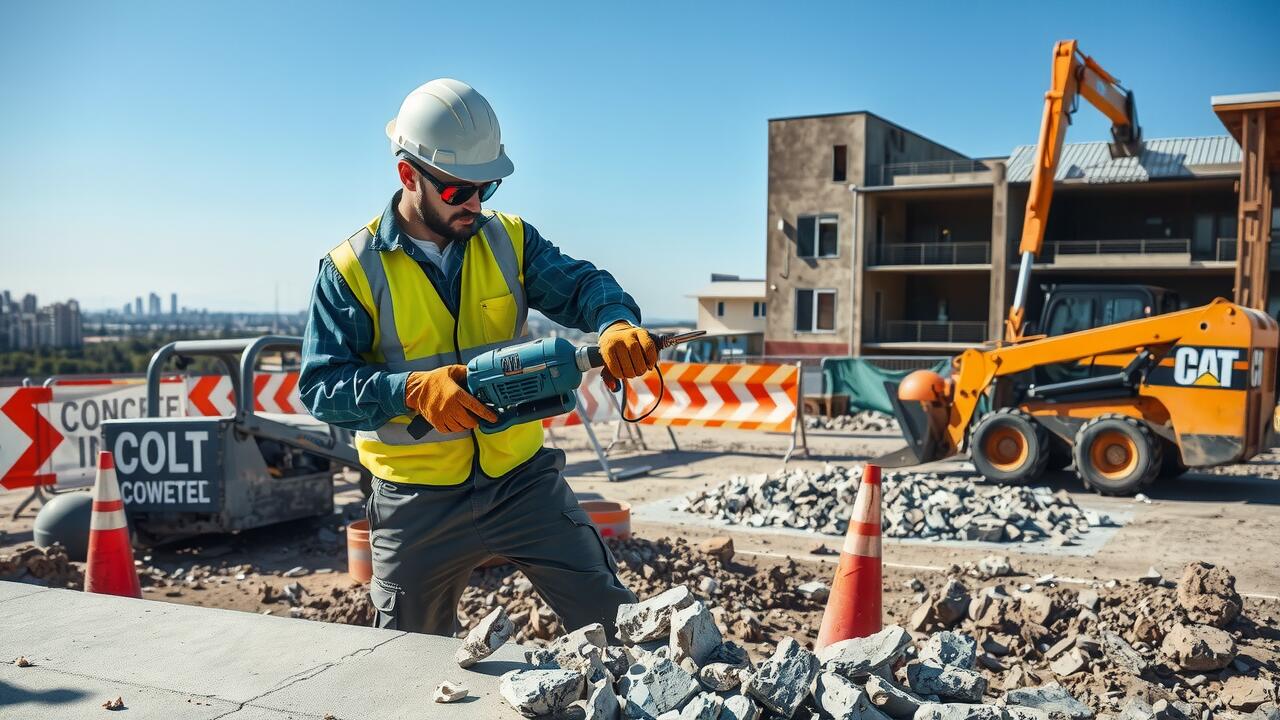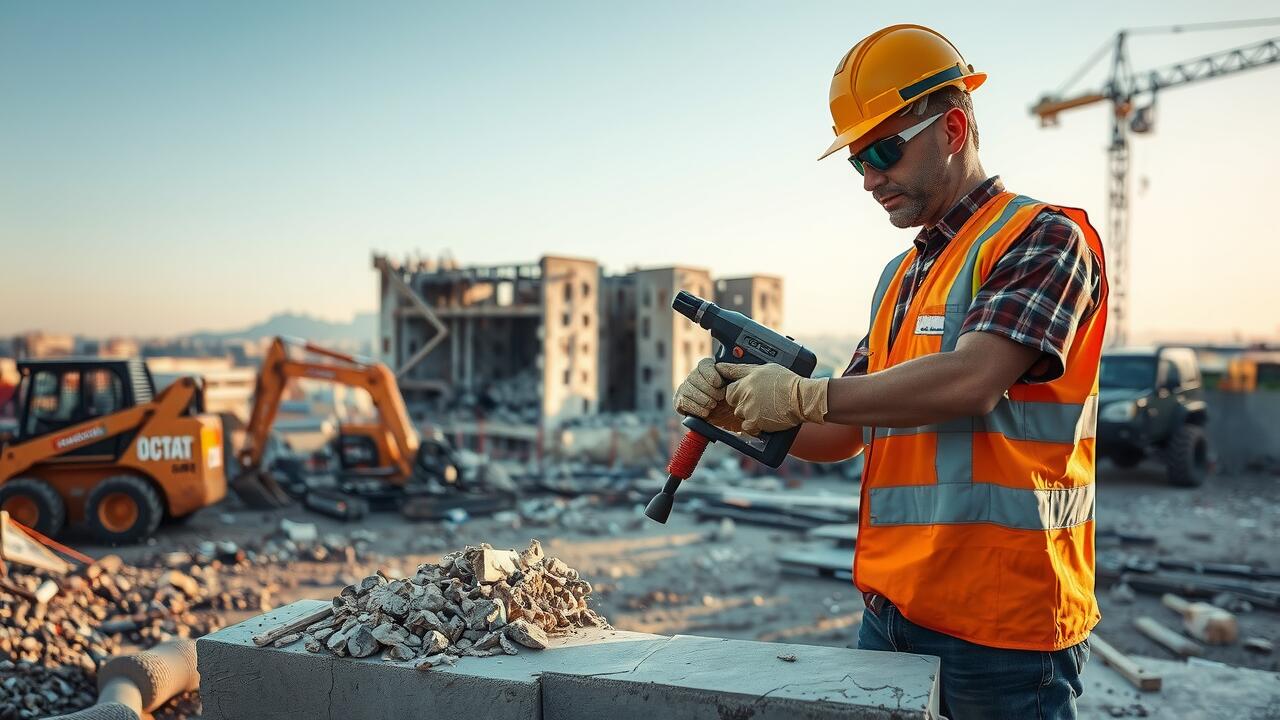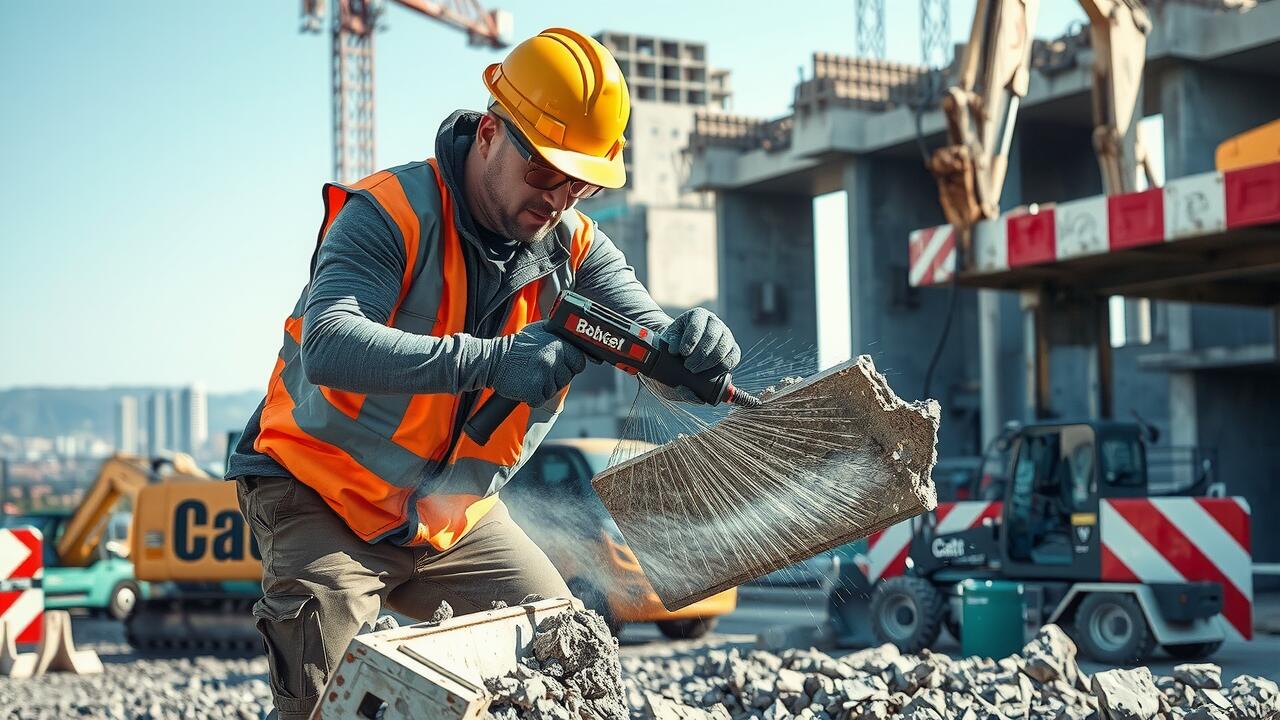
Table Of Contents
Concrete Saws and Cutters
Concrete saws and cutters are essential tools in concrete demolition, offering precision and efficiency for cutting through hardened surfaces. Several types of saws exist, including wall saws, flat saws, and hand-held saws. Each type serves different purposes, depending on the scale and specifics of the project. Wall saws are ideal for vertical cuts, while flat saws are better suited for horizontal surfaces. Choosing the right tool can significantly impact the speed and success of the demolition process.
When selecting a concrete saw, factors such as the thickness of the concrete, the required depth of the cut, and the area’s accessibility should be considered. Electric saws are often used for smaller projects or indoor applications where emissions are a concern. Gas-powered saws provide more power for larger jobs, especially outdoors. Ensuring the chosen saw meets the project’s requirements is crucial for effective concrete demolition and achieving the desired results.
Selecting the Best Saw for Your Project
Choosing the right saw for concrete demolition can significantly impact the efficiency and safety of the project. The type of concrete involved, along with the depth and precision required for cuts, should heavily influence your selection. For smaller jobs, handheld concrete saws or cut-off saws may suffice, allowing for mobility and ease of use. For larger projects, a wall saw or a flat saw may be more appropriate, as these are designed for deeper cuts and larger surfaces, ensuring a cleaner and more effective demolition process.
Additionally, consider the power source of the saw. Gas-powered saws offer mobility and high performance, making them suitable for outdoor work. In contrast, electric saws are quieter and do not emit exhaust, making them ideal for indoor projects. Blade selection is equally important; diamond blades are favored for their durability and efficiency in cutting through tough concrete materials. By carefully assessing these factors, you can select the best saw that fits the specific requirements of your concrete demolition project.
Equipment for Rebar Removal
Removing rebar is a crucial aspect of concrete demolition. The presence of rebar can significantly complicate the process, making specialized tools essential for effective extraction. Tools such as rebar cutters and bending tools are specifically designed to handle the tough steel, allowing workers to efficiently cut and shape rebar as needed. In many cases, pneumatic tools such as rebar shears can speed up the process, minimizing downtime during demolition activities.
For more intricate rebar removal tasks, electric and hydraulic rebar cutters provide excellent options. These tools allow for precision cutting in tight spaces where larger equipment may not fit. Additionally, rebar extractors, which leverage mechanical advantage, enable workers to pull rebar out of concrete cleanly without causing excessive damage to the surrounding material. Utilizing the right equipment ensures that rebar removal is both fast and effective, making it an integral part of any concrete demolition project.
Tools Specifically Designed for Rebar Extraction
Rebar extraction is a critical aspect of concrete demolition, as it often determines the feasibility of recycling materials and the overall efficiency of the project. Specialized tools designed for this purpose can significantly reduce the time and effort required. For instance, rebar cutters offer a quick and effective means of severing rebar without the need for manual labor, while rebar benders allow for easy shaping and maneuvering of extracted material. These tools not only enhance safety but also contribute to cleaner work environments.
In addition to cutters and benders, there are dedicated rebar pullers available that help extract embedded rebar from concrete with minimal damage to the surrounding material. These tools use leverage and pressure to safely disengage rebar, making them invaluable during demolition. Investing in the right equipment ensures that the rebar removal process is streamlined, ultimately supporting the effective execution of concrete demolition projects and paving the way for new construction efforts.
Waste Removal and Disposal Tools
Effective waste removal and disposal tools play a crucial role in any concrete demolition project. After breaking down concrete structures, managing the debris becomes essential to maintain site safety and efficiency. Dump trucks and skips are commonly used for transporting waste materials away from the site. Smaller tools like shovels and wheelbarrows can help maneuver the debris in tight spaces, ensuring a smoother cleanup process.
In addition to transportation, selecting the right disposal methods is important. Recycling concrete has gained popularity, allowing materials to be reprocessed and repurposed in new construction projects. This not only minimizes landfill waste but also provides an environmentally friendly approach to concrete demolition. Proper planning for waste management can significantly enhance the overall effectiveness of a demolition project.
Efficient Methods for Concrete Debris Management
Effective waste removal and disposal are crucial components of any concrete demolition project. Utilizing specialized tools designed for debris management can streamline the cleanup process. Equipment such as skid-steer loaders, dump trucks, and pneumatic hammers enhances efficiency when handling large volumes of broken concrete. Proper organization of the worksite allows for quicker access to waste removal tools, minimizing delays and maintaining productivity.
Recycling concrete debris serves as an eco-friendly option while also reducing disposal costs. Many jurisdictions now offer facilities capable of processing concrete waste, turning it into aggregate for use in new construction projects. Employing a systematic approach not only manages waste effectively but contributes to sustainability efforts. Planning the disposal strategy in advance ensures that all aspects of concrete demolition are addressed, from demolition to final cleanup.
FAQS
What types of concrete saws are best for demolition projects?
The best types of concrete saws for demolition projects include handheld saws, wall saws, and floor saws. Handheld saws are ideal for smaller, detailed cuts, while wall and floor saws are better suited for larger, more extensive demolition tasks.
How do I choose the right saw for my concrete demolition project?
To choose the right saw, consider factors such as the size and thickness of the concrete, the type of cuts needed, and the overall scope of the project. Additionally, reviewing manufacturer specifications and consulting with professionals can help ensure you select the best tool for your needs.
What tools are recommended for rebar removal during concrete demolition?
Recommended tools for rebar removal include rebar cutters, pry bars, and reciprocating saws equipped with metal cutting blades. These tools are specifically designed to make the extraction process more efficient and less labor-intensive.
What are effective methods for managing concrete debris after demolition?
Effective methods for managing concrete debris include using a concrete crusher for recycling, employing a skid steer loader for transporting debris, and renting a dumpster for disposal. It’s important to follow local regulations regarding waste disposal and recycling options.
Are there any safety precautions I should take when using demolition tools?
Yes, safety precautions are crucial when using demolition tools. Always wear appropriate personal protective equipment (PPE) such as hard hats, goggles, gloves, and respiratory protection. Additionally, ensure the work area is clear of hazards and that all tools are properly maintained and used according to manufacturer instructions.

